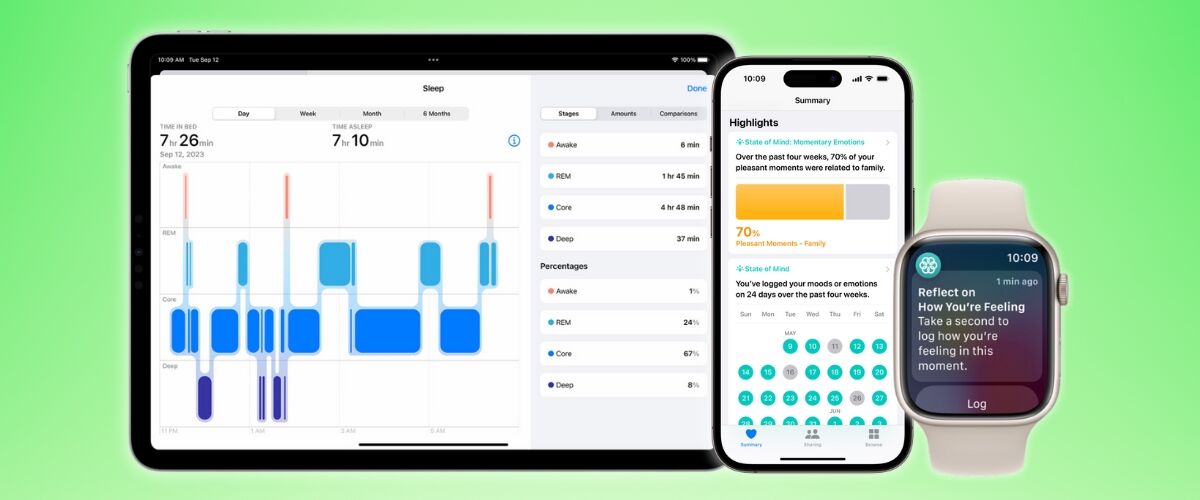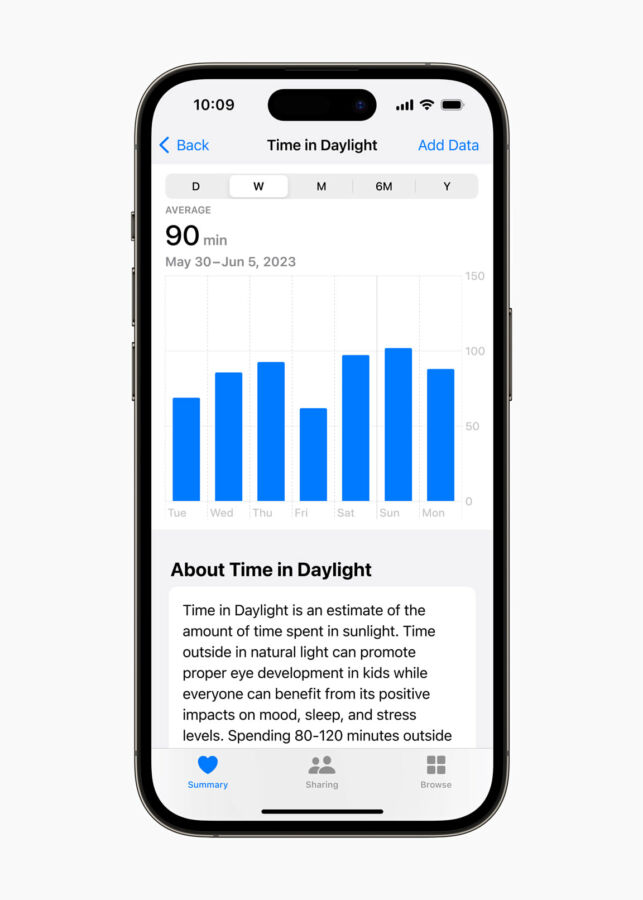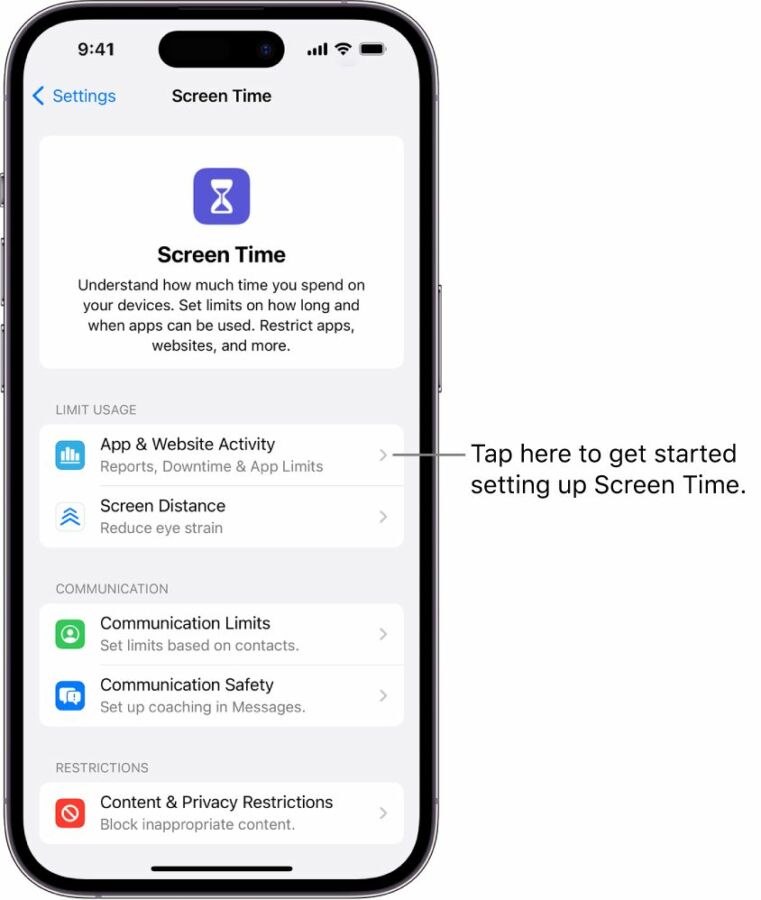May marks Mental Health Awareness Month, a time dedicated to promoting understanding and strategies for personal well-being, and Apple’s suite of devices, from the iPhone, Apple Watch, and iPad offer tools that enhance mental health management. And with the recent unveiling of the iPad Pro M4, Apple continually introduces advanced offerings that can play a pivotal role in promoting mental health initiatives, from mood tracking to mindfulness, all designed to help users nurture a more positive mindset.
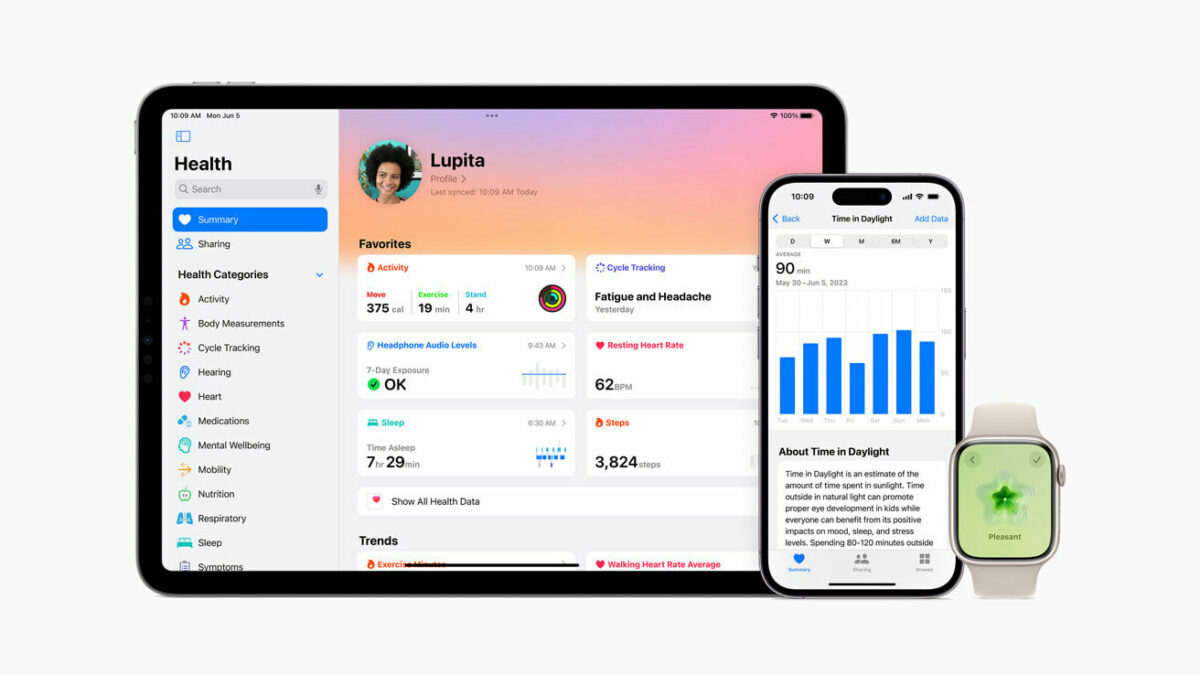
The new iPad Pro, known for its thin, light design and new M4 chip, enhances several Apple features beneficial for mental health, as the enhanced processing power makes apps like the State of Mind feature and Journal app on the iPad more responsive and efficient, allowing for real-time mood tracking and emotional journaling with ease. The State of Mind feature, for example, allows users to log daily moods and track emotional triggers, helping users gain insights into their mental health patterns. This can be particularly effective when used in conjunction with the Journal app, where users can reflect on daily experiences and express gratitude through the software.
For those looking to reduce distractions, the Focus feature allows users to customise notification settings to minimise interruptions and enhance concentration. Apple’s commitment to health is also evident in its tools for physical activity and outdoor time tracking, promoting a lifestyle that balances digital engagement with physical health.
Here’s how these features can help nurture a healthier mindset.
1) Log your moods and emotions
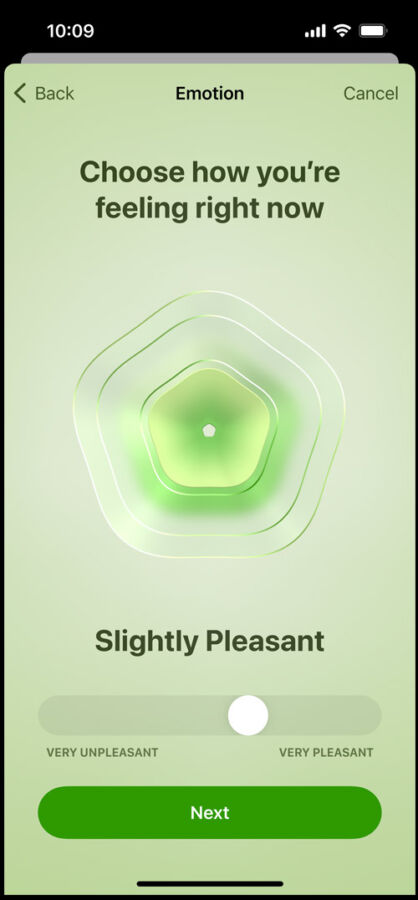
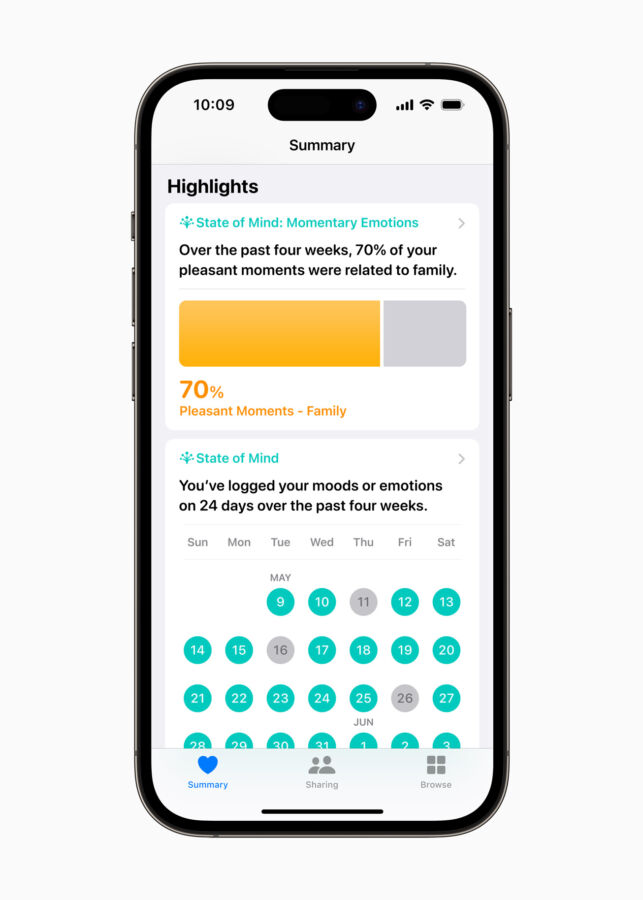

The State of Mind app on the Apple Watch plays a crucial role in fostering emotional awareness and resilience. By enabling users to log and track their emotions and moods consistently, this tool offers valuable insights into personal emotional health. It’s not just about recognising feelings of sadness or anger, but about understanding what triggers these emotions and how they can be managed effectively.
Reflecting on one’s mental state has been shown to significantly reduce negative emotions and slow the heart rate, leading to a calmer, more controlled response to stress. Users can note their immediate emotions and overall mood throughout the day, using a detailed visual scale and a comprehensive vocabulary to accurately capture their emotional state. This helps in pinpointing specific lifestyle factors or daily activities that may influence mood swings, such as sleep patterns, exercise routines, and even diet.
Moreover, this feature encourages regular self-reflection, which is essential in building a deeper understanding of one’s mental health. By tracking these emotional trends, users can identify consistent triggers and begin to work on strategies to manage them effectively. Whether it’s adjusting sleep habits, increasing physical activity, or finding more time for relaxation, the insights provided by the State of Mind feature empower users to make informed decisions about their mental health.
2) Take mental health assessments


Apple’s Health app on iPhone and iPad provides valuable tools for self-assessment, mirroring the types of evaluations often used in clinical settings. These tools include the Patient Health Questionnaire-9 (PHQ-9) for depression and the Generalized Anxiety Disorder-7 (GAD-7) for anxiety, which are standardised instruments used by healthcare professionals. By integrating these assessments, Apple enables users to conduct private evaluations of their mental health, facilitating early detection and awareness of symptoms.
It’s important to note that while these assessments can help users identify signs of depression and anxiety, they are not designed to diagnose these conditions. They are intended to inform users about their mental health and encourage discussions with healthcare professionals. After completing an assessment, users can easily share the results with their care team via a PDF export from the Health app, enhancing communication and making consultations more efficient. Apple stresses that this feature is informational and encourages anyone concerned about their mental health to seek professional advice.
3) Track your time spent in daylight
It’s important to explore the various ways technology can help us maintain our mental well-being. Apple devices, particularly the Apple Watch, include innovative features like daylight tracking, where the built-in ambient light sensor in the Apple Watch measures the amount of environmental light, providing users with data on their daily exposure to natural daylight. This feature is particularly useful because numerous studies have demonstrated that spending 15 to 30 minutes outdoors each day can decrease anxiety and lower stress levels.
The Apple Health app plays a crucial role in this process by collecting the data captured by your Apple Watch and organising it into an easily accessible record under the ‘Mental Wellbeing’ category. Here, the ‘Time in Daylight’ metric provides a clear view of how much time you spend in natural light, encouraging a healthier lifestyle. Additionally, for those who manage family devices via Family Setup, this feature can monitor the daylight exposure of family members, helping to ensure that even children or elderly relatives are benefiting from sufficient outdoor time.
Understanding your patterns of sunlight exposure can inspire you to make beneficial adjustments to your daily routine. However, it’s important to note that factors like cloud cover, environmental shade, or even wearing long sleeves can affect the sensor’s readings, and even on cloudy days, being outdoors is better for mental health than staying indoors. By making daylight exposure data readily available, Apple devices help users make informed decisions about their daily activities.
4) Reflect and practice gratitude
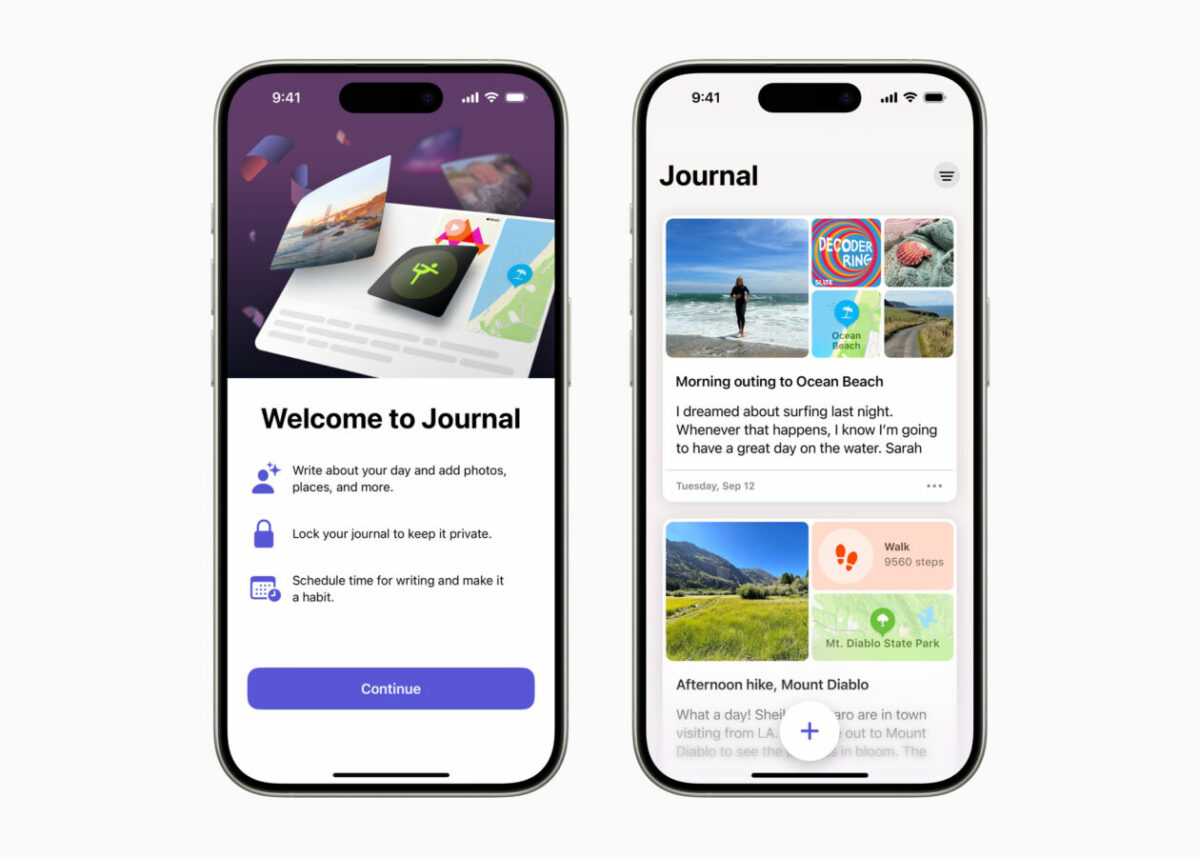
Journaling has long been recognised for its therapeutic benefits, and the Journal iPad app elevates this practice by allowing users to capture and articulate their thoughts, feelings, and experiences using multimedia elements such as photos, videos, audio recordings, and location data. These features make journal entries more vivid and memorable, allowing users to revisit and reflect on past experiences with rich contextual details. Additionally, the app’s use of on-device machine learning ensures privacy while offering personalised writing prompts, helping users explore new journaling topics and deepen their reflective practice.
Studies have shown that expressing gratitude regularly can significantly enhance overall well-being, increase happiness, and even improve sleep quality. The Journal app supports these outcomes by providing customisable reminders to encourage consistent writing habits, reinforcing the connection between gratitude and improved mental health.
5) Reduce distractions and disconnect
Apple’s Focus feature helps users minimise distractions and manage their digital environment effectively, allowing individuals to create a personalised experience on their devices that supports concentration on specific tasks or relaxation without interruptions. By setting boundaries around app notifications and communications, Focus ensures that you can work, rest, or engage in personal activities with fewer digital interruptions.
Users can choose from predefined settings like Work, Personal, or Sleep, or create custom settings tailored to their specific needs. This flexibility allows users to decide which contacts and apps can send notifications, reducing the likelihood of unnecessary interruptions. Additionally, Focus status is shared with contacts attempting to reach you through Messages, informing them that you are temporarily unavailable unless it’s urgent.
Users can quickly enable Focus from the Control Center, and schedule it to activate automatically at chosen times or in response to certain triggers such as arriving at a particular location or launching a specific app. This adaptability makes it easy to integrate Focus into daily routines, enhancing productivity and reducing stress.
6) Practice breathing exercises

The Mindfulness app on the Apple Watch encourages users to set aside time each day for mindfulness, helping them focus, centre, and connect with their inner peace through guided breathing sessions. The Breathe app within the Mindfulness suite provides visual animations that help pace your breathing, complemented by gentle haptic feedback on your wrist.
Users can customise their mindfulness experience by adjusting the duration of each session from one to five minutes and setting the desired breaths per minute to suit their comfort level. Additionally, the app allows for the scheduling of reminders, prompting users to take short breathing breaks throughout their busy day, which can be a boon for mental clarity and emotional balance.
The Breathe watch face on the Apple Watch serves as a constant, gentle reminder to engage in breathing exercises, with an animation that expands and contracts, mirroring the natural rhythm of deep breathing. By integrating these practices into daily life, the Mindfulness app and Breathe watch face on the Apple Watch foster a healthy habit of mindfulness that can enhance overall mental well-being.
7) Schedule time away from the screen
Scheduling time away from screens is crucial for maintaining mental health, and Apple’s Screen Time settings provide a practical solution for managing digital interactions. This feature allows for the blocking of apps and notifications during selected times, such as mealtime or bedtime, enhancing daily routines and promoting better sleep by reducing exposure to screens. Users can also set daily time limits on specific app categories, like social media or games, encouraging breaks and reducing aimless scrolling.
Screen Time is particularly valuable for families, with options to control communication during allowed screen time and downtime, ensuring children’s digital interactions are safe and appropriate. The feature’s flexibility lets users customise settings to fit personal and family needs, fostering a mindful approach to device usage.
8) Create a personalised sleep schedule
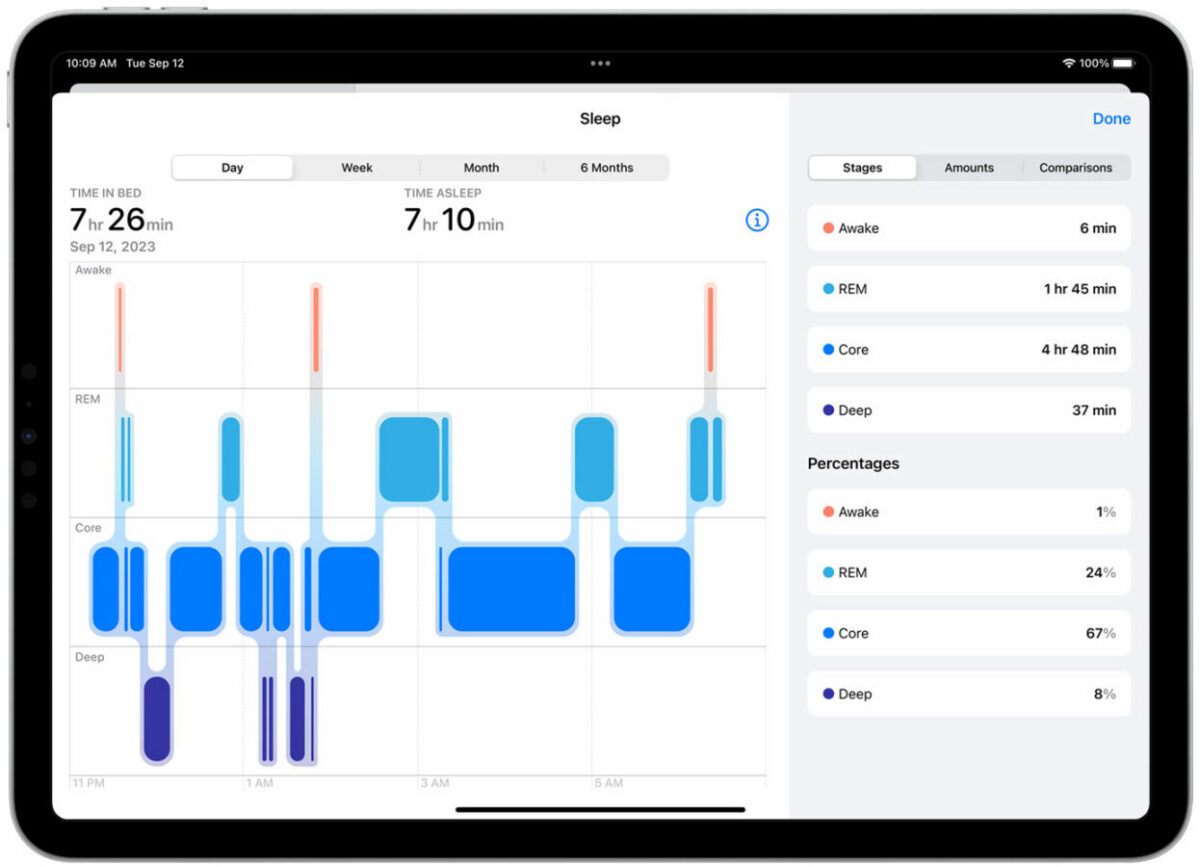
Creating a personalised sleep schedule with Apple devices like the Apple Watch and iPhone can significantly enhance both physical and mental health. The Sleep app integrated into these devices provides comprehensive tools to track and manage sleep patterns effectively. This app is designed not only to monitor the duration and stages of sleep – including light, deep, and REM sleep – but also to help users establish and maintain a consistent sleep routine tailored to their lifestyle needs.
Users can set specific bedtimes and wake-up times, along with targeted sleep duration goals, directly on their iPhones. To assist in winding down, the app offers features like Wind Down, which can trigger soothing activities such as playing relaxing sounds or dimming smart lights to create an optimal environment for sleep.
Regular, restful sleep is crucial for emotional regulation, sharpening focus, and reducing anxiety and irritability. Moreover, the Sleep Focus mode complements this by reducing nighttime distractions, ensuring that notifications do not disrupt the sleep cycle.
By integrating technology into everyday wellness practices, Apple is helping users take proactive steps towards improving their mental health. The variety of tools available on devices like the iPhone, Apple Watch, and the newly enhanced iPad Pro M4 cater to different aspects of mental wellness, from reducing stress to ensuring a good night’s sleep.
Whether it’s mood tracking, mindfulness practices, or simply setting boundaries for a healthier relationship with technology, consider how these features could integrate into your own wellness toolkit.

